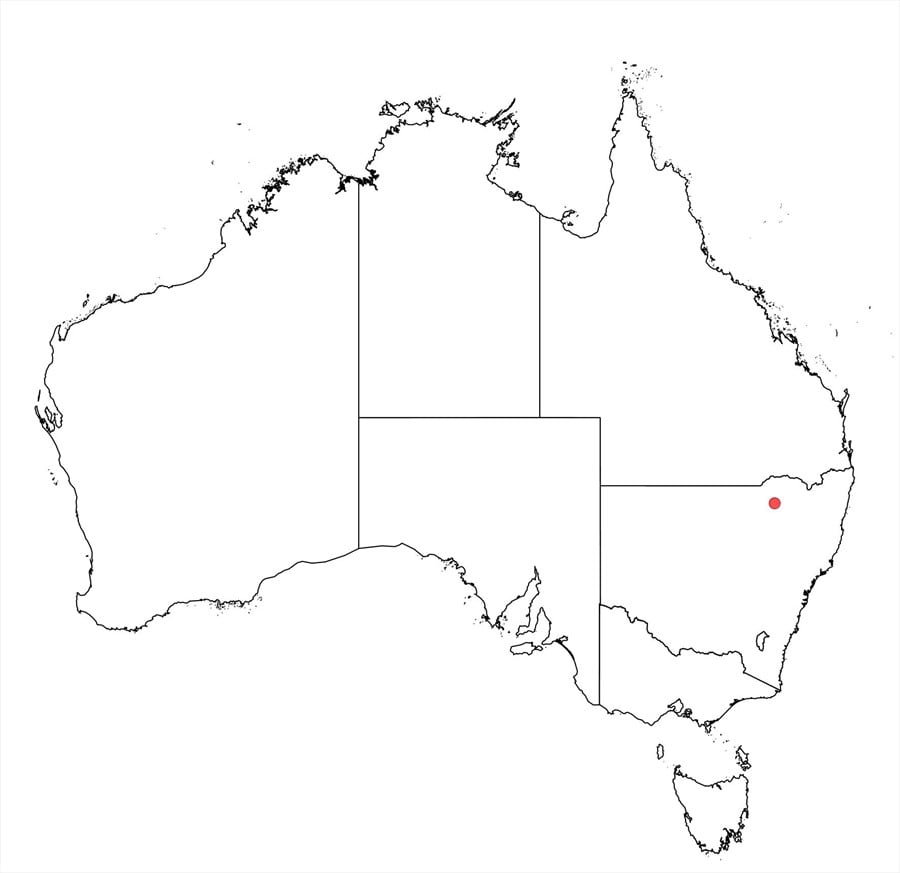Acacia atrox subsp. planitiicola Kodela & L.M.Copel.
WATTLE
Acacias of Australia
Family
Fabaceae
Distribution
Known from only a single population SSW of Moree, N.S.W., where it occurs in five distinct clumps (50–200 m apart) over an area of approximately five hectares. Warrants inclusion as an Endangered Species under the NSW Threatened Species Conservation Act, 1995.
Description
Shrub or small tree to 6 m high. Phyllodes subrigid, (1.5–) 2–5 cm long, 0.7–1.5 mm wide, longitudinally splayed at base for 1–2.2 mm, gradually or somewhat abruptly tapered to cusp 0.7–2.2 mm long; obscurely 4-nerved (other veins very obscure and easily confused with longitudinally wrinklings when phyllode dry). Peduncles (5–) 12–32 mm long; heads c. 33–41-flowered, 7–11 mm diam. (dry).
Phenology
Flowers March–June.
Habitat
It grows on basalt-derived cracking clay loam (‘black soil’) in a mosaic of natural grasslands and grassy woodlands with small trees up to 10 m high, see L.M.Copeland & P.G.Kodela, Telopea 14: 63–68 (2012) for further details.
Specimens
N.S.W. Kirramingly Nat. Reserve, c. 30 km SSW of Moree, L.M.Copeland 4421 (BRI, CANB, MEL, NE, NSW).
FOA Reference
Flora of Australia Project
Author
P.G.Kodela, B.R.Maslin
This identification key and fact sheets are available as a mobile application:
URL: https://apps.lucidcentral.org/wattle/
© Copyright 2018. All rights reserved.






